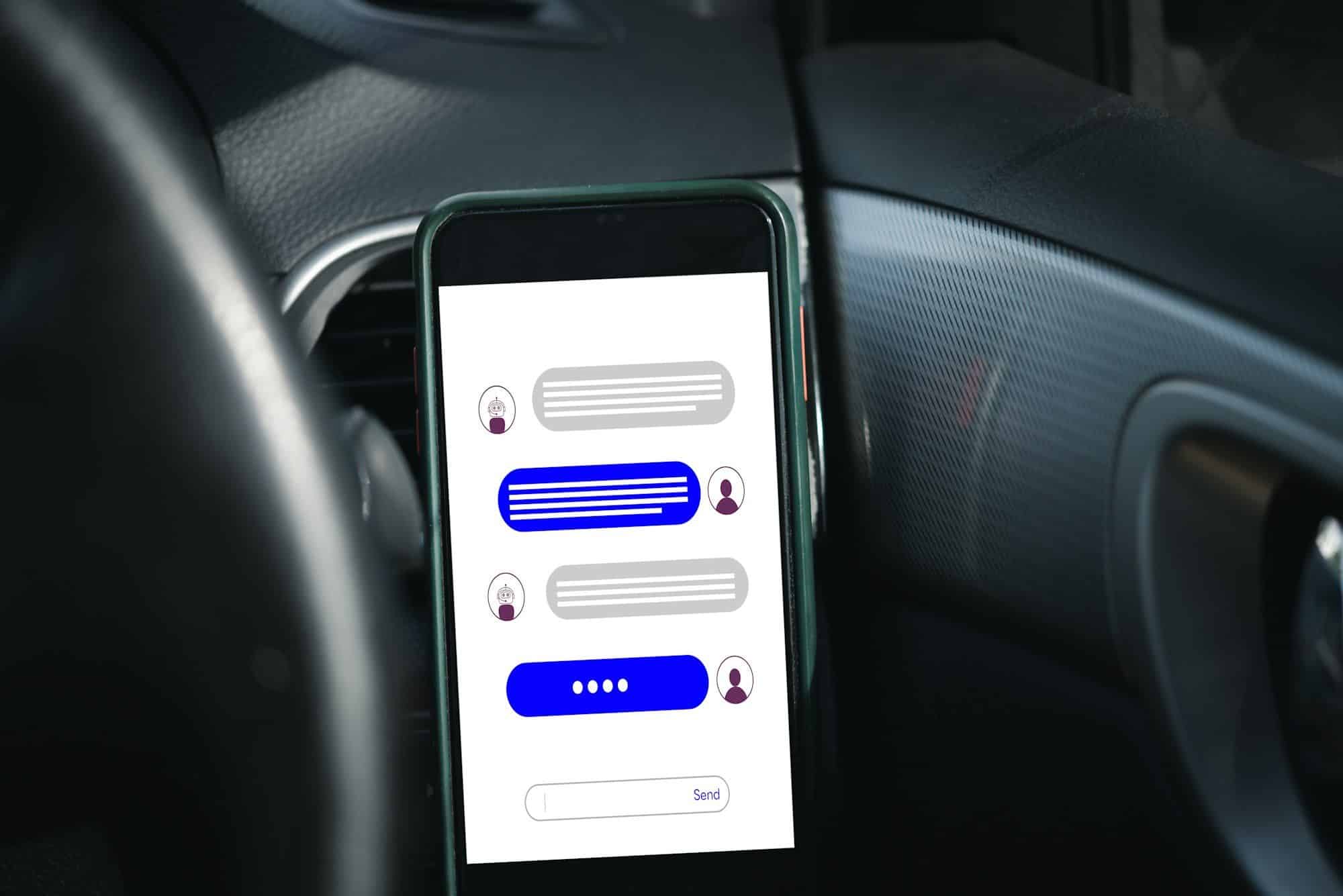As digital interactions continue to evolve, UK government service websites are embracing chatbots to enhance user experience. These AI-driven tools simplify information access, streamline processes, and provide personalized support. Many citizens face challenges when seeking assistance, and chatbots offer timely answers, making government services feel more approachable. This shift not only improves efficiency but also fosters trust in digital governance. Explore the transformative impact chatbots are having on public service websites, shaping a more user-focused approach.
Overview of Chatbots in Government Services
Chatbots are automated conversational agents designed to interact with users through text or voice interfaces. In the realm of public service, they aim to streamline communication, offering quick and accurate responses to citizens' inquiries. The purpose of chatbots in government services is to enhance efficiency and accessibility, reducing the workload on human staff and providing 24/7 support.
This might interest you : Unlocking Success: The Top Digital Marketing Strategies to Boost UK Artisan Cheese Makers
In the UK, the adoption of chatbots within government services is progressing, albeit at varying speeds across different departments. Many UK government websites have integrated chatbots to handle routine queries, such as passport applications or tax information. These chatbots are part of a broader digital transformation initiative, aiming to modernise public services and improve user experience.
Digital transformation in government services involves leveraging technology to deliver services more effectively. This trend includes not only the implementation of chatbots but also the use of artificial intelligence and data analytics to inform decision-making and policy development. The goal is to create a more responsive and citizen-centric government, capable of meeting the evolving needs of the public in an increasingly digital world.
Have you seen this : Design eye-catching book mockups in minutes: here’s how
Enhancing User Experience with Chatbots
Chatbots significantly enhance user experience by improving accessibility and responsiveness in government services. These automated agents provide immediate responses, ensuring that citizens receive the information they need without delay. This is particularly beneficial in handling high volumes of inquiries, where traditional methods might falter due to limited human resources.
Customer satisfaction metrics often reflect the positive impact of chatbots. Feedback from users typically highlights the convenience and efficiency of interacting with chatbots compared to waiting in queues or navigating complex websites. This immediate support fosters a sense of reliability and trust in government services.
When comparing user experience between traditional methods and chatbots, the differences are notable. Traditional methods often involve lengthy processes and potential human error, whereas chatbots offer streamlined interactions with minimal wait times. This efficiency not only increases user satisfaction but also allows government staff to focus on more complex tasks, ultimately improving overall service quality.
In summary, the integration of chatbots into government services offers clear benefits. They provide a more accessible, responsive, and satisfying experience for users, aligning with the broader goals of digital transformation and citizen-centric service delivery.
Effectiveness of Chatbots in Service Delivery
The effectiveness of chatbots in government service delivery can be measured through various performance metrics. These metrics provide insights into how well chatbots handle user queries and their overall impact on service efficiency.
One key metric is response time, which assesses how quickly a chatbot can provide answers to user inquiries. A fast response time is crucial for maintaining user satisfaction and ensuring that citizens receive timely assistance. Another important metric is the resolution rate, indicating the percentage of queries successfully resolved by the chatbot without needing human intervention. High resolution rates demonstrate the chatbot's capability to handle complex queries effectively.
Case studies from various UK government departments highlight the successful implementation of chatbots. For instance, a chatbot introduced for managing passport applications significantly reduced processing times and improved user satisfaction by providing accurate, real-time information. Similarly, tax-related chatbots have streamlined the process of answering common questions, allowing human staff to focus on more intricate issues.
By analysing these metrics and case studies, it becomes evident that chatbots are transforming service delivery. They not only enhance service delivery by improving accessibility and efficiency but also contribute to the broader goals of digital transformation within government services.
Challenges of Implementing Chatbots
Implementing chatbots in government services presents several implementation challenges. One major hurdle is integrating chatbot technology with existing legacy systems, which can be complex and resource-intensive. These systems often require significant updates to support chatbot functionalities, leading to potential delays and increased costs.
Chatbot limitations also pose significant challenges. While chatbots excel at handling straightforward queries, they may struggle with complex or nuanced questions. This limitation can result in user frustration when chatbots fail to provide satisfactory responses, highlighting the need for human oversight in certain scenarios.
User concerns regarding privacy and data security are paramount. Citizens are understandably cautious about sharing personal information with automated systems. Ensuring robust data protection measures and transparent data usage policies are essential to gaining public trust. Government agencies must address these concerns by implementing stringent security protocols and maintaining clear communication with users about how their data is handled.
Moreover, overcoming language and accessibility barriers remains a challenge. Chatbots must be designed to cater to diverse user needs, including those with disabilities or language constraints. Ensuring inclusivity and accessibility in chatbot design is crucial for equitable service delivery.
User Demographics and Interaction Patterns
Understanding user demographics is crucial for optimizing chatbot interactions on government websites. Different age groups engage with chatbots in varying ways, reflecting distinct interaction patterns and preferences.
Young adults, typically more tech-savvy, often prefer quick, concise responses and are comfortable with automated systems. In contrast, older users may seek more detailed explanations and reassurance, indicating a need for chatbots to provide comprehensive and user-friendly interfaces.
User behavior also varies significantly, with some users expecting immediate resolutions to their queries while others value detailed guidance on navigating services. These expectations highlight the importance of tailoring chatbot responses to meet diverse user needs effectively.
Insights into these demographics and behavior patterns can inform chatbot development, ensuring that they cater to the preferences of different user groups. For instance, incorporating features like voice assistance for those less comfortable with text-based interfaces can enhance accessibility and satisfaction.
Moreover, understanding these patterns aids in predicting future trends and adapting chatbot functionalities accordingly. This approach not only improves user experiences but also aligns with the broader goals of digital transformation in government services, ensuring inclusivity and efficiency in public service delivery.
Comparison of Traditional Services vs. Chatbots
In the realm of government services, the difference between traditional services and chatbots is stark. Traditional services often involve manual processes, requiring citizens to wait in queues or navigate complex phone systems. This can lead to inefficiencies and delays, significantly impacting user satisfaction.
Chatbot comparison reveals a more streamlined approach. Chatbots offer immediate responses and are available 24/7, providing a level of efficiency that traditional methods struggle to match. This immediacy is crucial, especially during peak times when demand for services is high.
Efficiency gains from using chatbots over traditional methods are substantial. By automating routine inquiries, chatbots free up human resources to focus on more complex tasks, enhancing overall service delivery. This not only reduces wait times but also improves the accuracy and consistency of information provided to citizens.
User feedback on preferences between chatbots and human interaction varies. While some users appreciate the speed and convenience of chatbots, others value the reassurance of speaking with a human. Understanding these preferences is vital for optimizing service delivery, ensuring that chatbots complement rather than replace human interactions where needed.
Future Trends in Digital Government Services
As the landscape of digital government evolves, the role of chatbots is poised for significant transformation. Predictions indicate that future trends will focus on enhancing chatbot capabilities, driven by emerging technologies and shifting user expectations.
Chatbot Evolution will likely see advancements in natural language processing and machine learning. These technologies promise to make chatbots more intuitive, allowing them to understand complex queries and provide nuanced responses. This evolution is crucial for meeting the diverse needs of citizens, ensuring that chatbots remain a reliable source of information.
Emerging technologies like artificial intelligence and blockchain are set to impact chatbot capabilities further. AI can improve the accuracy of chatbots, while blockchain can enhance data security, addressing privacy concerns. These innovations will enable chatbots to handle more sophisticated tasks, such as personalised services and real-time data analysis.
Trends in user expectations are also shaping future developments. Citizens increasingly demand seamless and personalised interactions, pushing for chatbots that can offer tailored solutions. As a result, governments must focus on creating chatbots that are not only efficient but also empathetic and user-centric. This approach will ensure that digital government services continue to evolve in line with public needs.
Practical Examples of Chatbots in Action
Exploring chatbot examples within UK government services reveals valuable insights into their functionalities and impact. One notable case study is the HM Revenue and Customs (HMRC) chatbot, which assists users with tax-related inquiries. This chatbot effectively handles a high volume of routine questions, showcasing best practices in deployment by reducing wait times and freeing up human resources for more complex tasks.
Another successful implementation is the National Health Service (NHS) chatbot, designed to provide health advice and information. This chatbot exemplifies best practices by offering accurate, up-to-date guidance, enhancing user experience and accessibility to health services.
Lessons learned from less successful deployments highlight the importance of continuous improvement and user feedback. For instance, a local council's chatbot initially struggled with understanding nuanced inquiries, leading to user frustration. By analysing these challenges, developers refined the chatbot's natural language processing capabilities, significantly improving its performance.
Best practices emphasise the need for robust testing and iterative development. Successful chatbot implementations involve ongoing evaluation and adaptation, ensuring they meet evolving user needs. By learning from both successes and challenges, government agencies can optimise chatbot functionalities, enhancing service delivery and user satisfaction.
Expert Opinions on Chatbot Integration
In the realm of digital services, expert opinions provide valuable insights into the integration of chatbot technologies within government systems. Industry leaders emphasize the transformative potential of chatbots, highlighting their ability to streamline operations and enhance user engagement.
Digital service experts advocate for a strategic approach to chatbot deployment, suggesting that government entities should prioritize user-centric designs. This involves creating chatbots that not only address common queries but also adapt to evolving user needs through continuous learning and improvement.
Industry insights suggest that future developments will likely focus on enhancing chatbot capabilities through advancements in artificial intelligence and machine learning. These technologies promise to improve chatbot accuracy and responsiveness, making them more adept at handling complex inquiries.
For government entities considering chatbot integration, experts recommend a phased approach. This includes conducting pilot programs to assess chatbot performance and gather user feedback. Additionally, collaboration with industry specialists can provide guidance on best practices and potential pitfalls, ensuring successful implementation.
By leveraging expert opinions and industry insights, government agencies can optimize chatbot functionalities, ultimately delivering more efficient and accessible digital services to the public.
Conclusion and Recommendations
In examining the integration of chatbots in government services, several key takeaways emerge. The adoption of chatbots has notably improved service delivery, enhancing accessibility and efficiency. However, challenges such as integration with legacy systems and addressing user concerns about privacy remain critical.
For government agencies considering chatbot adoption, several recommendations can be made. Firstly, ensuring robust data security measures is essential to gain public trust. Agencies should also focus on integrating chatbots that can handle complex queries, reducing user frustration. Continuous improvement through user feedback and iterative development is vital for maintaining chatbot effectiveness.
Looking towards future directions, enhancing user experience through advanced technologies like artificial intelligence and machine learning is imperative. These technologies can improve chatbot accuracy and responsiveness, enabling more personalised and empathetic interactions. Additionally, exploring multilingual capabilities and accessibility features can further broaden the reach and inclusivity of government services.
By adhering to these best practices and focusing on future advancements, government agencies can optimise their chatbot implementations, ensuring they meet the evolving needs of the public while aligning with broader digital transformation goals.











